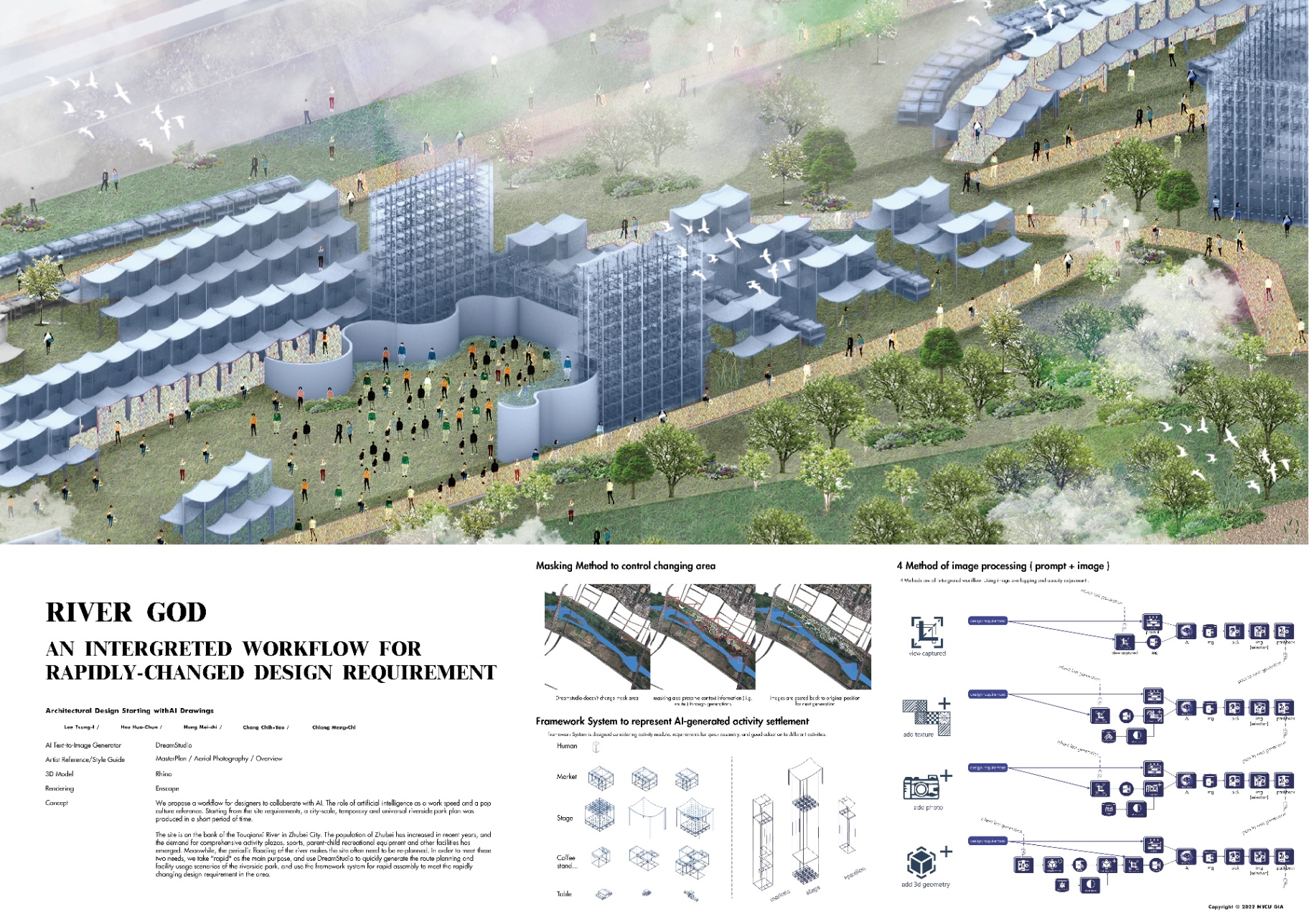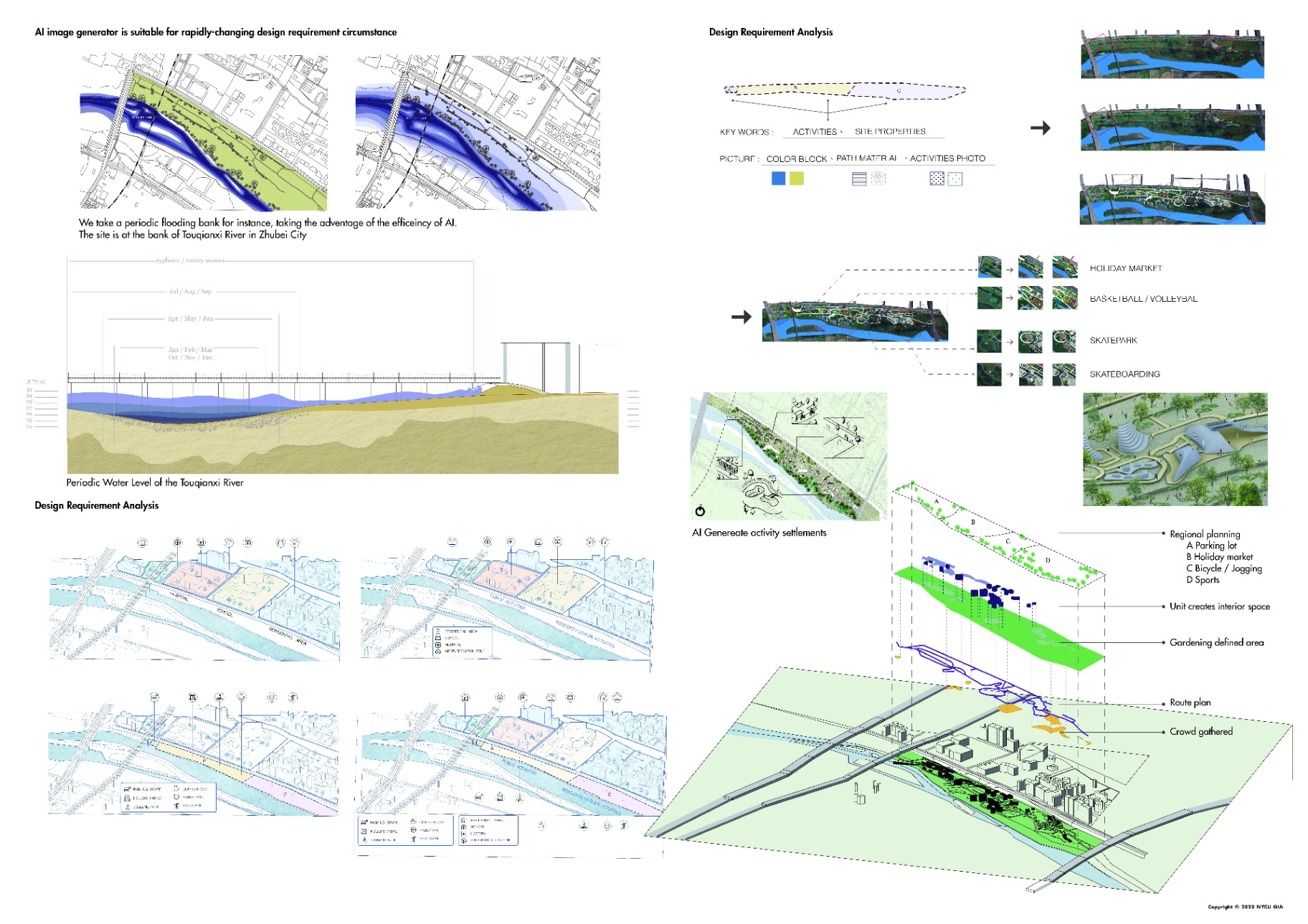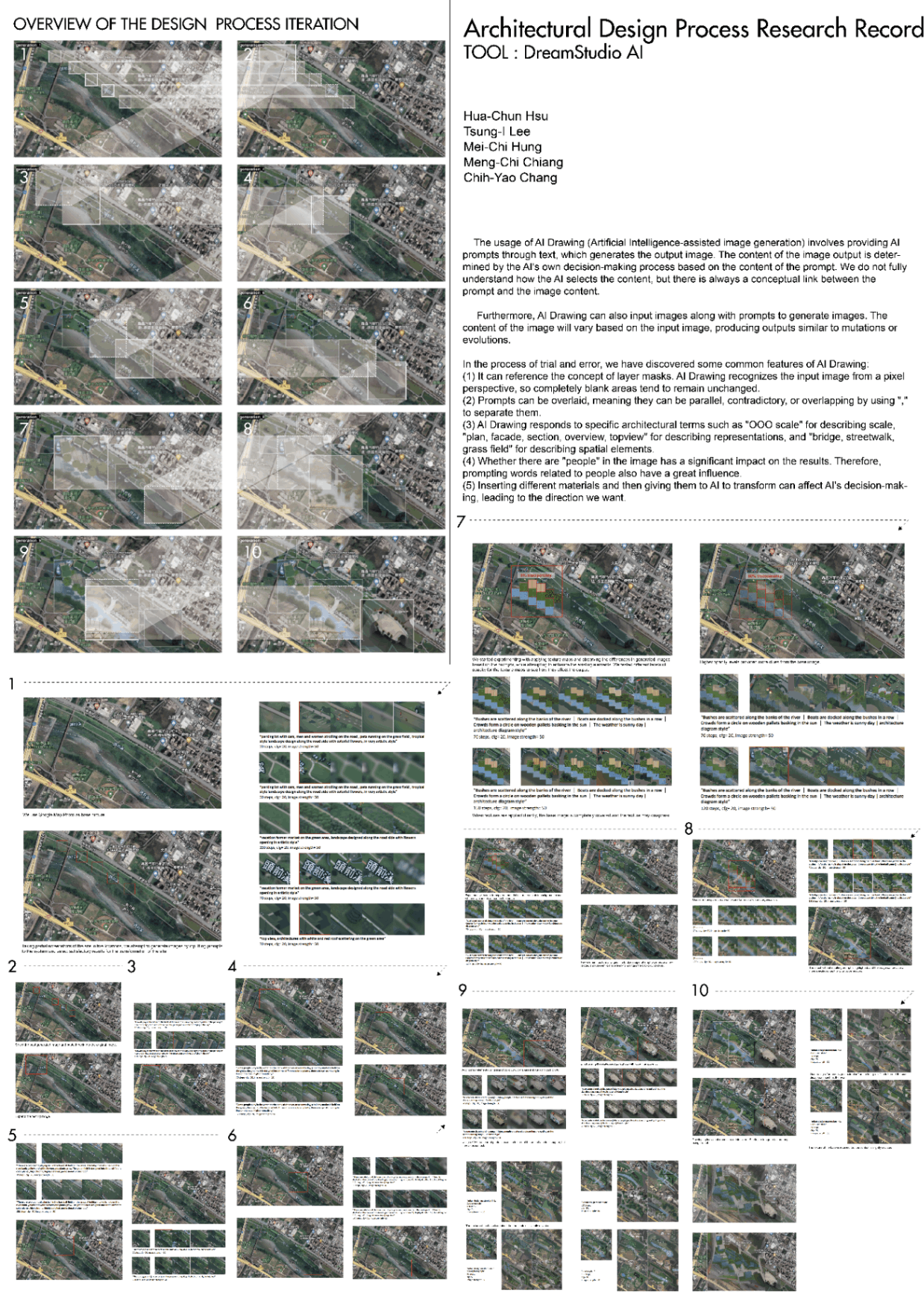Back
River God
Year: 2022
Category: Landscape & Urbanism
Skills: Rhino, Grasshopper, Illustrator, Enscape
There is still a lot of room for growth for Ai Drawing. If viewed as a tool, it has a lot of potential for development. If viewed as a new way of thinking, it should not be limited to a specific concept of a single artwork but rather valued for its breadth and future potential. In summary, we believe that developing a methodology that is applicable to a specific context is necessary to showcase the charm of Ai Drawing and its collaboration with human designers.
Ai Drawing has already become a mature design method. The development of this method is usually based on the operation of a large number of design cases. In this process, designers develop a design process or central idea with certain commonalities and find ways to successfully communicate and cooperate with the public or clients. Ai Drawing, on the other hand, is based on a large amount of data training, which can replace humans in converting conceptual thinking into geometric forms and producing outputs that are "accepted to a certain degree" by the society. In other words, the state of the machine learning model is consciously optimized by a large number of engineers or even designers who recognize it as "meeting the needs of today's society." It is not trained and fed with data aimlessly, but is optimized for the relationship between "two-dimensional images" and "conceptual thinking" in a direction closer to human aesthetics.
We conducted a research experiment using a riverfront park project in Zhubei City as our study subject. This park has a town-scale, temporary, and universal design. We proposed a design process that aims to facilitate collaboration between designers and artificial intelligence, based on practical experimentation and verification of feasibility, and to openly discuss how to meet the "cyclical and temporary" design requirements in architecture. Artificial intelligence and machine learning have been proven to effectively improve work efficiency and assist users in cultural referencing (since image-generating machine learning mostly trains on network image databases, it indirectly references contemporary human culture). The usage of Ai Drawing (AI-assisted image generation) is by providing AI prompts through text prompts and generating image outputs. The image output will be determined by the AI's interpretation of the prompt content. Although we don't fully understand the decision-making process of AI in selecting the content, there is always a conceptual connection between the prompt and the image content. Additionally, Ai Drawing can also input images and prompts together to generate image prompts. In this case, the image content will be based on changes made to the input image, resulting in outputs that resemble mutations or evolutions.
Zhubei City is an emerging town in the Hsinchu area, and its population has been steadily increasing. This has led to a growing demand for outdoor activity spaces, sports facilities, and family entertainment equipment in Zhubei. Meanwhile, the Touqian River is located on the southern edge of the city, and its periodic flooding makes it difficult to plan permanent building facilities in the area. However, the large land area and proximity to the urban area make it a good geographic location. To address these challenges, we combined AI with our workflow and prioritized "speed" as an important principle. We used DreamStudio to quickly generate a route plan and facility usage plan for the riverside park. At the same time, we designed a quick-assembly frame system that allows users to quickly assemble and adapt to the rapidly changing design needs of the area.
We propose a design process aimed at promoting collaboration between designers and artificial intelligence (AI) and based on experimental verification of feasibility. We also discuss how to practice and help with the "periodic and temporary" design needs in architecture. AI and machine learning have been shown to be effective in improving work efficiency and helping users with cultural references (as image generation through machine learning mostly uses image databases, which inadvertently reference contemporary human culture). In the iterative process, we found some common features of Ai Drawing: (1) It can refer to the concept of layer masks. Ai Drawing recognizes the input image from a pixel's perspective, so completely blank areas tend not to change. (2) Prompts can be superimposed, with parallel, contradictory, and overlapping meanings separated by commas. (3) Ai Drawing responds to specific architectural terms such as describing scale ("OOO scale"), representation ("plan, facade, section, overview, top view"), and space elements ("bridge, streetwalk, grass field"). (4) The presence of "people" in the image greatly affects the result, and whether or not to prompt with relevant keywords related to people also has a significant impact.
Archi Automata
More by Archi Automata
View profile


